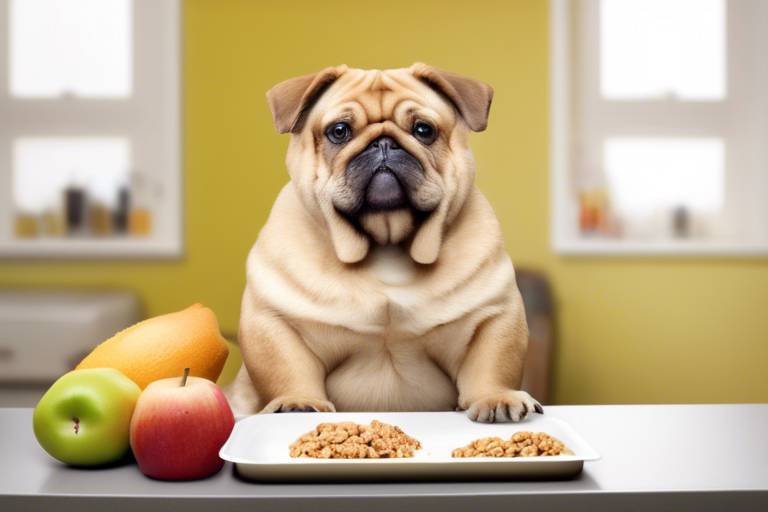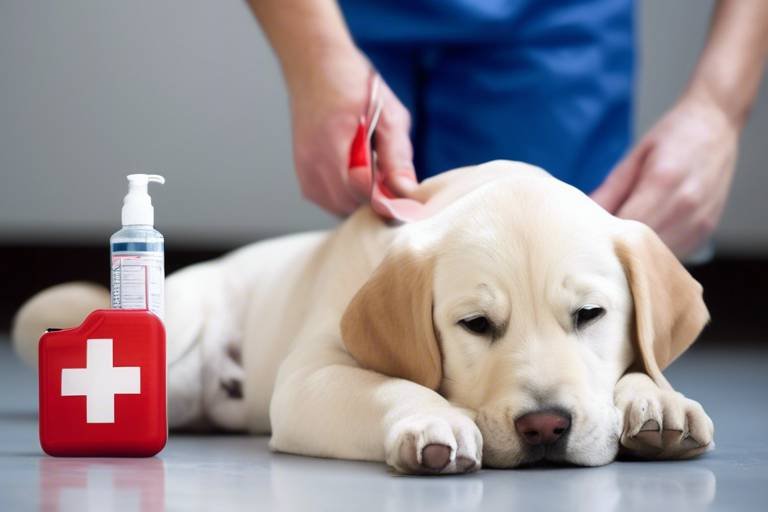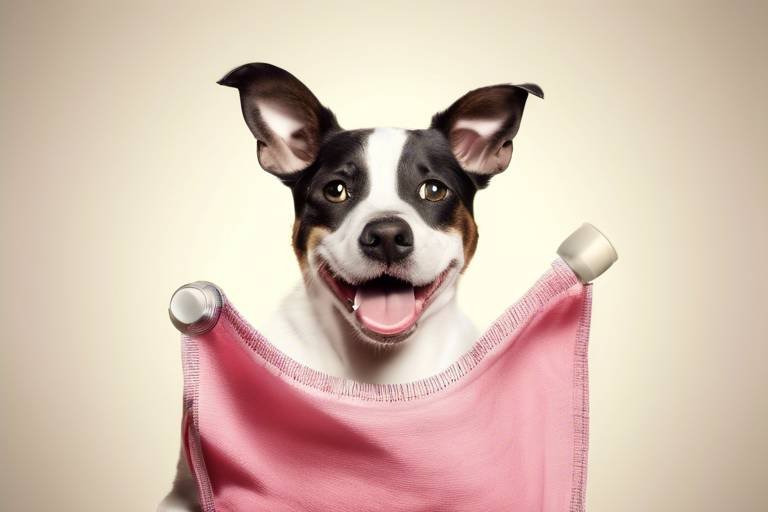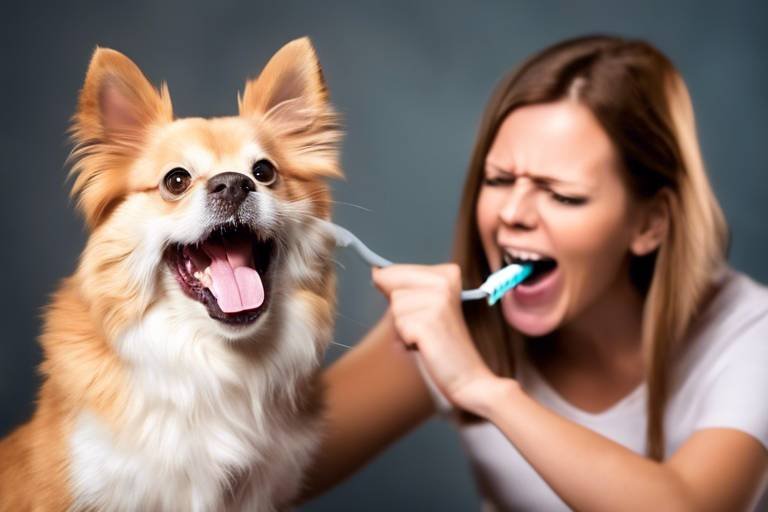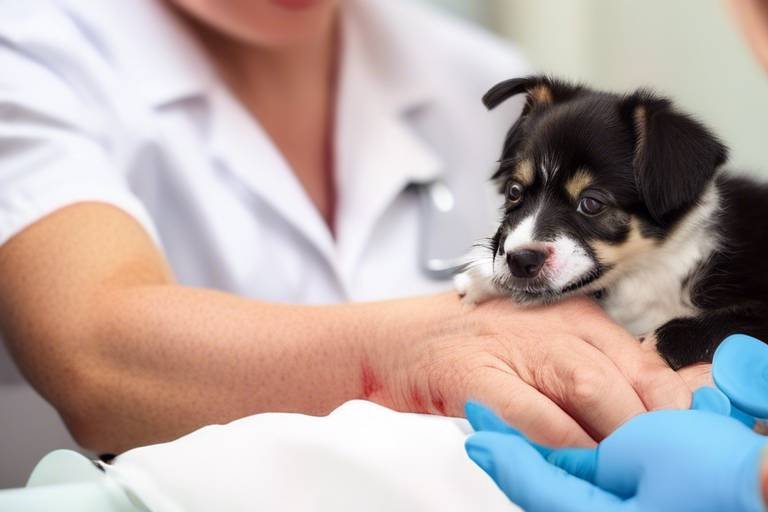The Benefits of a Raw Food Diet for Pets
Are you considering switching your furry friend to a raw food diet? You're not alone! Many pet owners are discovering the incredible benefits that come with feeding their pets a diet rich in natural, unprocessed ingredients. This article explores the advantages of feeding pets a raw food diet, including improved health, digestion, and vitality, while also addressing potential concerns and practical considerations for pet owners. Let’s dive into why this dietary choice is making waves in the pet community!
A raw food diet often contains higher nutritional content compared to processed pet foods. Think of it as the difference between a fresh salad and a bag of chips. Just as you would choose fresh vegetables for your own meals, your pets deserve the same level of care. Raw diets are typically rich in essential vitamins and minerals, which promote overall health and well-being in pets. Ingredients like raw meats, fruits, and vegetables are not only packed with nutrients but also free from artificial additives that can harm your pet in the long run.
Many pets experience better digestion on a raw food diet due to the absence of fillers and artificial ingredients. Imagine your pet's digestive system as a finely tuned engine; when you add high-quality fuel, it runs smoothly. By eliminating processed foods that often contain hard-to-digest ingredients, pet owners can lead their furry companions to fewer gastrointestinal issues and healthier stools. This shift can also reduce the frequency of trips to the vet for digestive problems, saving both time and money.
Raw foods contain natural enzymes that aid in digestion. These enzymes help pets break down food more efficiently and absorb nutrients effectively, much like how our own bodies utilize enzymes to digest meals. The result? A happier, healthier pet that is less likely to experience discomfort after eating.
Interestingly, raw diets often include ingredients that promote the growth of beneficial gut bacteria. This is crucial for enhancing overall gut health and immune function in pets. Just as probiotics can improve human digestion, they can do the same for our furry friends. A healthy gut can lead to a stronger immune system, which means fewer vet visits and a more vibrant life for your pet.
Switching to a raw food diet may help alleviate food allergies in pets. By eliminating common allergens found in processed foods, such as grains and artificial additives, many pet owners report a noticeable improvement in their pets' skin conditions and overall comfort. Imagine how great it feels to finally find a solution to that pesky itch!
Another significant advantage of a raw food diet is its ability to support healthy weight management in pets. With balanced nutrition and no unnecessary fillers that contribute to weight gain, pets can maintain a healthy weight more easily. This is especially important for pets that struggle with obesity, which can lead to various health issues. A raw diet is like a tailored fitness program for your pet, ensuring they get just what they need without the excess.
Pets on a raw food diet often exhibit higher energy levels, leading to improved activity, playfulness, and overall quality of life. It's a bit like giving your pet a natural energy drink, but without the sugar crash! You might notice your dog running around the yard with renewed vigor or your cat engaging in playful antics that you haven't seen in years. This increase in energy can lead to a more fulfilling life for your pet and a stronger bond between you both.
The high protein content in raw diets supports muscle development and maintenance, which is particularly beneficial for active and working pets. Just like athletes require protein to build and repair muscle, your pets need it too. A raw diet can help your furry friends achieve their peak physical condition, making them stronger and more agile.
Finally, a raw food diet can lead to a shinier and healthier coat. It often includes essential fatty acids that promote skin and fur health. Think of it as a beauty treatment for your pet! A glossy coat is not just a sign of health but also an indicator of your pet's overall well-being. When your pet feels good on the inside, it shows on the outside.
While there are many benefits, transitioning to a raw food diet requires careful planning and consideration of nutritional balance. It's crucial to ensure pets receive all necessary nutrients, much like how we need a balanced diet to thrive. Consulting with a veterinarian or a pet nutritionist can help you navigate this new dietary landscape, ensuring your beloved pet enjoys all the perks of a raw food diet without any pitfalls.
- Is a raw food diet safe for all pets? - While many pets thrive on a raw diet, it may not be suitable for every animal. Always consult your veterinarian before making significant changes to your pet's diet.
- How do I transition my pet to a raw food diet? - Gradually introduce raw food while mixing it with their current food to avoid digestive upset.
- Are there any risks associated with raw feeding? - Yes, raw diets can carry risks of bacterial contamination. Proper handling and hygiene are essential.
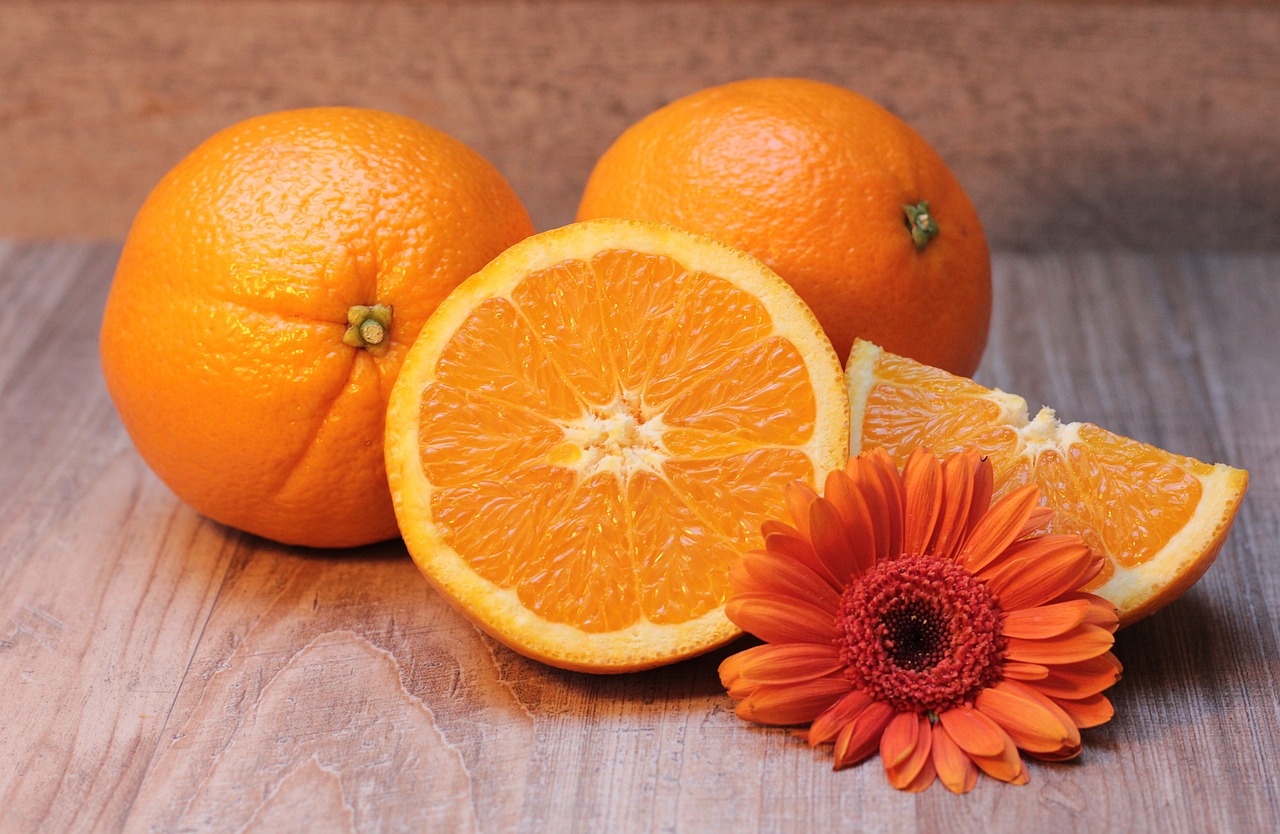
Improved Nutritional Value
This article explores the advantages of feeding pets a raw food diet, including improved health, digestion, and vitality, while also addressing potential concerns and practical considerations for pet owners.
When it comes to our furry friends, nutrition is key. A raw food diet often boasts a higher nutritional content compared to processed pet foods. This means that your pet is getting a diet rich in essential vitamins and minerals that are crucial for their overall health and well-being. Imagine feeding your pet a meal that has not been stripped of its nutrients; it’s like giving them a slice of nature itself!
Processed pet foods often contain fillers that serve little purpose other than to bulk up the product. These fillers can dilute the nutritional value, leaving your pet with a diet that lacks the necessary components for optimal health. In contrast, a raw food diet is packed with whole ingredients that provide a more balanced nutritional profile. For instance, raw meats, organs, and bones contain vital nutrients like:
- Proteins: Essential for muscle development and energy.
- Vitamins: Such as A, B, D, and E, which support various bodily functions.
- Minerals: Including calcium and phosphorus, important for bone health.
Moreover, the freshness of raw ingredients can have a profound impact on the bioavailability of nutrients. This means that pets can absorb and utilize these nutrients more efficiently. Think of it this way: just as we thrive on fresh fruits and vegetables, pets flourish on fresh, raw foods. It’s a back-to-basics approach that aligns with their natural dietary needs.
Another significant advantage of a raw food diet is its potential to reduce the risk of chronic diseases. Many chronic conditions in pets, such as obesity, diabetes, and skin allergies, can be linked to poor nutrition. By providing a diet that is free from artificial preservatives, colors, and flavors, pet owners can significantly improve their pet's health outcomes. It's like switching from fast food to a wholesome, home-cooked meal—your pet will feel the difference!
However, it’s essential to ensure that the raw food diet is balanced and complete. This means incorporating a variety of proteins, vegetables, and supplements to cover all nutritional bases. Consulting with a veterinarian or a pet nutritionist can help you formulate a diet plan that meets your pet's unique needs. After all, a well-planned raw food diet can be a game-changer for your pet's health!
Many pets experience better digestion on a raw food diet due to the absence of fillers and artificial ingredients, leading to fewer gastrointestinal issues and healthier stools.
Raw foods contain natural enzymes that aid in digestion, helping pets break down food more efficiently and absorb nutrients effectively.
Raw diets often include ingredients that promote the growth of beneficial gut bacteria, enhancing overall gut health and immune function in pets.
Switching to a raw food diet may help alleviate food allergies in pets by eliminating common allergens found in processed foods.
A raw food diet can support healthy weight management in pets by providing balanced nutrition without unnecessary fillers that contribute to weight gain.
Pets on a raw food diet often exhibit higher energy levels, leading to improved activity, playfulness, and overall quality of life.
The high protein content in raw diets supports muscle development and maintenance, which is particularly beneficial for active and working pets.
A raw food diet can lead to a shinier and healthier coat, as it often includes essential fatty acids that promote skin and fur health.
While there are many benefits, transitioning to a raw food diet requires careful planning and consideration of nutritional balance to ensure pets receive all necessary nutrients.
Q1: Is a raw food diet safe for all pets?
A1: While many pets can thrive on a raw food diet, it's crucial to consult with a veterinarian to ensure it's appropriate for your specific pet's needs.
Q2: How do I transition my pet to a raw food diet?
A2: Gradually introduce raw foods into your pet's diet over a week or two, mixing it with their current food to avoid digestive upset.
Q3: What should I include in a raw food diet?
A3: A balanced raw food diet should include a variety of proteins, vegetables, and supplements to ensure all nutritional needs are met.
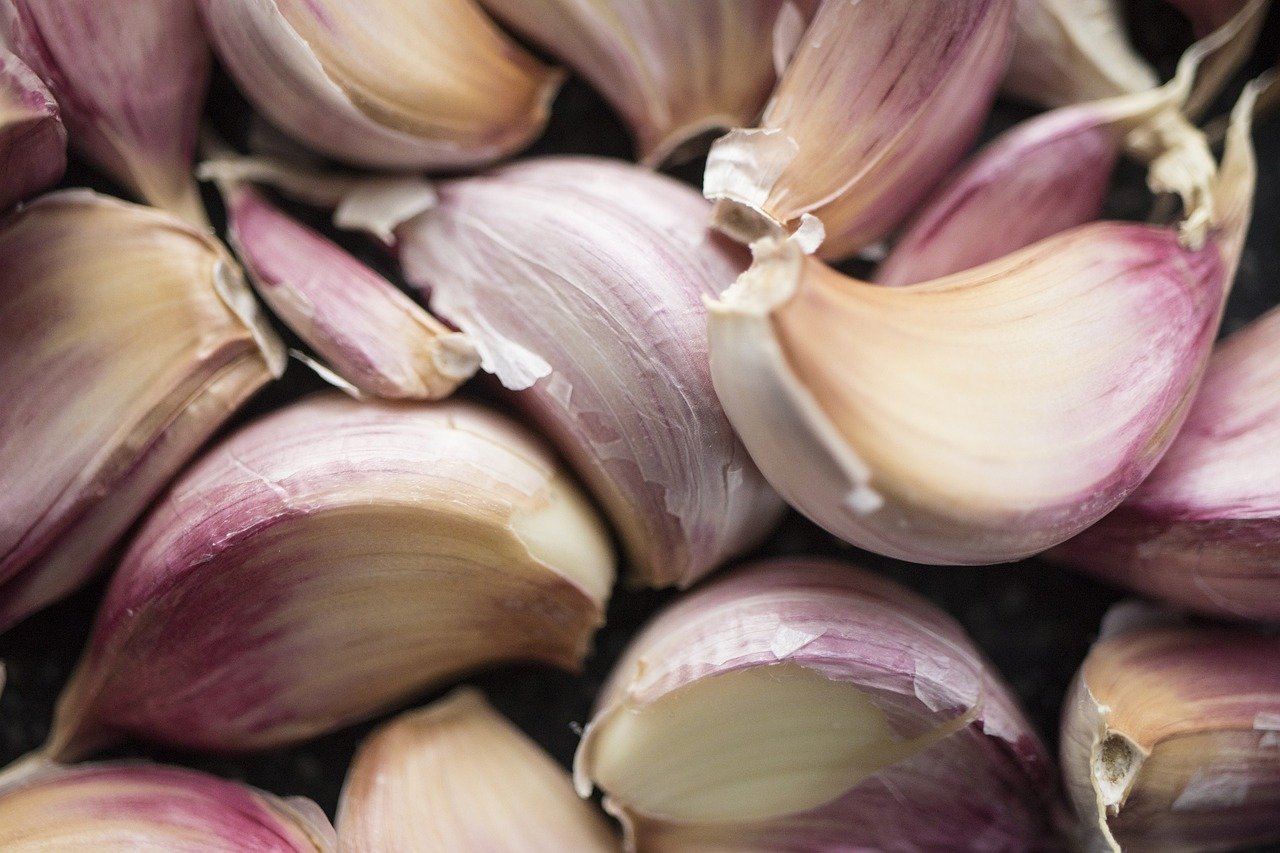
Enhanced Digestion
When it comes to our furry companions, digestion plays a crucial role in their overall health and happiness. Many pet owners are discovering that a raw food diet can significantly improve their pets' digestive health. Unlike processed pet foods, which often contain a myriad of fillers and artificial ingredients, raw diets are typically composed of whole, unprocessed foods that are much easier for pets to digest. This means fewer gastrointestinal issues and healthier stools, which is a win-win for both pets and their owners!
One of the key benefits of a raw food diet is the absence of unnecessary fillers. These fillers, which can include grains and by-products, often lead to digestive discomfort in pets. By switching to a raw food diet, pet owners can help their furry friends avoid these common irritants. Instead, raw diets focus on high-quality meats, bones, fruits, and vegetables that provide not only better nutrition but also a more natural way for pets to digest their food.
Another fascinating aspect of raw food diets is the presence of natural enzymes. These enzymes are essential for breaking down food and facilitating nutrient absorption. Think of them as the little helpers in your pet's digestive system, ensuring that every bite is utilized to its fullest potential. When pets consume raw foods, they benefit from these enzymes, which can lead to improved digestion and overall health.
Moreover, raw diets often include ingredients that are rich in probiotics, which are beneficial bacteria that promote gut health. A healthy gut is vital for a strong immune system, and by feeding pets a raw diet, owners can support the growth of these good bacteria. Ingredients like fermented vegetables or raw dairy can be excellent additions to a raw food regimen, enhancing gut health and helping to keep those digestive systems running smoothly.
For many pets, switching to a raw food diet can also mean a reduction in food allergies. Processed foods often contain common allergens such as soy, corn, and wheat, which can lead to uncomfortable reactions in sensitive pets. By eliminating these ingredients and opting for a raw diet, pet owners may notice a significant decrease in allergy symptoms. This transition can be particularly beneficial for pets who have struggled with skin issues or digestive upset linked to food intolerances.
In summary, the enhanced digestion that comes with a raw food diet can lead to happier, healthier pets. With fewer gastrointestinal issues, better nutrient absorption, and a reduction in allergies, pet owners can feel confident that they are making a positive change for their furry friends. As always, it’s essential to consult with a veterinarian before making any significant changes to your pet's diet to ensure that it’s the right fit for their individual needs.
- What is a raw food diet for pets? A raw food diet consists of uncooked meats, fruits, and vegetables, aimed at providing pets with a more natural and nutritious food source.
- Are there any risks associated with a raw food diet? Yes, there can be risks such as bacterial contamination or nutritional imbalances if not properly managed. It's crucial to consult a veterinarian.
- How do I transition my pet to a raw food diet? Gradually introduce raw food into your pet's diet over a week or two, mixing it with their current food to ease the transition.
- Can all pets eat a raw food diet? While many pets thrive on a raw food diet, it's essential to consider individual health needs and consult with a veterinarian.
Natural Enzymes
This article explores the advantages of feeding pets a raw food diet, including improved health, digestion, and vitality, while also addressing potential concerns and practical considerations for pet owners.
A raw food diet often contains higher nutritional content compared to processed pet foods, providing essential vitamins and minerals that promote overall health and well-being in pets.
Many pets experience better digestion on a raw food diet due to the absence of fillers and artificial ingredients, leading to fewer gastrointestinal issues and healthier stools.
One of the standout features of a raw food diet is the presence of . These enzymes play a crucial role in helping your pet break down food more efficiently. Think of them as the unsung heroes of your pet's digestive system, working tirelessly to ensure that every bite is utilized to its fullest potential. When pets consume raw foods, they benefit from these enzymes, which are often destroyed during the cooking process of commercial pet foods.
For example, consider the difference between a freshly picked apple and one that has been sitting on the shelf for weeks. The fresh apple retains its natural enzymes, making it a vibrant source of nutrition, while the older one may have lost much of its beneficial properties. Similarly, raw foods provide pets with the enzymes they need to digest their meals effectively.
Moreover, these natural enzymes not only aid in digestion but also help in nutrient absorption. Pets that consume raw diets often experience less bloating and discomfort, leading to a more enjoyable mealtime. This efficient digestive process can also translate to healthier stools, which is a sign of a well-functioning digestive tract. Imagine how much easier it is to clean up after your furry friend when their digestion is running smoothly!
Incorporating raw foods into your pet's diet can also enhance their overall vitality. With better digestion and nutrient absorption, pets may exhibit increased energy levels and improved overall health. This means more playtime, more cuddles, and a happier pet!
Raw diets often include ingredients that promote the growth of beneficial gut bacteria, enhancing overall gut health and immune function in pets.
Switching to a raw food diet may help alleviate food allergies in pets by eliminating common allergens found in processed foods.
A raw food diet can support healthy weight management in pets by providing balanced nutrition without unnecessary fillers that contribute to weight gain.
Pets on a raw food diet often exhibit higher energy levels, leading to improved activity, playfulness, and overall quality of life.
The high protein content in raw diets supports muscle development and maintenance, which is particularly beneficial for active and working pets.
A raw food diet can lead to a shinier and healthier coat, as it often includes essential fatty acids that promote skin and fur health.
While there are many benefits, transitioning to a raw food diet requires careful planning and consideration of nutritional balance to ensure pets receive all necessary nutrients.
- What is a raw food diet for pets? A raw food diet consists of uncooked meat, bones, fruits, and vegetables, aiming to mimic the natural diet of wild animals.
- Are there any risks associated with feeding pets a raw food diet? Yes, there are potential risks, including bacterial contamination and nutritional imbalances if not properly managed.
- How can I transition my pet to a raw food diet? Gradually introduce raw foods into your pet's diet over several days to allow their digestive system to adjust.
- Will my pet like raw food? Many pets enjoy the taste of raw food, as it is often more appealing than processed kibble.
Probiotics and Gut Health
This article explores the advantages of feeding pets a raw food diet, including improved health, digestion, and vitality, while also addressing potential concerns and practical considerations for pet owners.
A raw food diet often contains higher nutritional content compared to processed pet foods, providing essential vitamins and minerals that promote overall health and well-being in pets.
Many pets experience better digestion on a raw food diet due to the absence of fillers and artificial ingredients, leading to fewer gastrointestinal issues and healthier stools.
Raw foods contain natural enzymes that aid in digestion, helping pets break down food more efficiently and absorb nutrients effectively.
When it comes to gut health, probiotics play a crucial role in maintaining a balanced digestive system for our furry friends. Raw food diets are often rich in ingredients that naturally contain these beneficial bacteria. By incorporating probiotics into their meals, pets can experience a significant boost in their gut health. This is because probiotics help in breaking down food, enhancing nutrient absorption, and promoting a healthy balance of gut flora.
Imagine your pet's gut as a bustling city; probiotics are like the friendly neighbors that keep everything running smoothly. Without them, traffic jams (or in this case, digestive issues) can become a common problem. A diet rich in raw foods provides the necessary nutrients that encourage the growth of these good bacteria, which in turn helps to:
- Improve digestion and nutrient absorption
- Enhance immune function
- Reduce inflammation in the gut
Moreover, a healthy gut can lead to fewer allergies and intolerances, as a well-balanced microbiome can better fend off unwanted invaders. This is particularly important for pets that may have sensitive stomachs or are prone to digestive upset. By choosing a raw food diet, you're not just feeding your pet; you're nurturing their gut health and overall vitality.
Switching to a raw food diet may help alleviate food allergies in pets by eliminating common allergens found in processed foods.
A raw food diet can support healthy weight management in pets by providing balanced nutrition without unnecessary fillers that contribute to weight gain.
Pets on a raw food diet often exhibit higher energy levels, leading to improved activity, playfulness, and overall quality of life.
The high protein content in raw diets supports muscle development and maintenance, which is particularly beneficial for active and working pets.
A raw food diet can lead to a shinier and healthier coat, as it often includes essential fatty acids that promote skin and fur health.
While there are many benefits, transitioning to a raw food diet requires careful planning and consideration of nutritional balance to ensure pets receive all necessary nutrients.
1. Is a raw food diet safe for all pets?
Yes, but it's essential to consult with a veterinarian to ensure that your pet's specific health needs are met.
2. What types of raw foods should I include in my pet's diet?
A balanced raw diet typically includes raw meats, bones, fruits, and vegetables. Always do your research or consult a professional.
3. How do I transition my pet to a raw food diet?
Start slowly by mixing raw food with their current diet and gradually increasing the raw portion over time to avoid digestive upset.
4. Can I prepare raw food at home?
Absolutely! Many pet owners choose to prepare raw meals at home, but it's vital to ensure that the diet is nutritionally complete.
5. Will my pet's coat improve on a raw food diet?
Many pet owners report shinier and healthier coats after transitioning to a raw food diet, thanks to the essential fatty acids and nutrients it provides.
Reduced Allergies
One of the most compelling reasons pet owners consider switching to a raw food diet is the potential for . Many pets suffer from food allergies, often triggered by common ingredients found in processed pet foods, such as grains, fillers, and artificial additives. These allergens can lead to a range of uncomfortable symptoms, including itching, digestive issues, and even behavioral problems. By transitioning to a raw food diet, pet owners can eliminate these common allergens and observe a significant improvement in their pets' overall health.
Raw diets typically consist of high-quality proteins, fresh fruits, and vegetables, which are less likely to provoke allergic reactions. For instance, ingredients like chicken, beef, or fish are often more digestible and less allergenic compared to the carbohydrate-heavy kibble that many pets consume. This shift not only helps in identifying potential allergens but also allows pet owners to customize their pets' diets based on their specific sensitivities.
Moreover, when pets are fed a raw food diet, they receive a more natural form of nutrition, which can support their immune system. A stronger immune system means that pets are better equipped to handle allergens, reducing the severity of allergic reactions. It's like giving them a shield against the elements of their environment that can trigger these unwanted responses.
To further illustrate the impact of a raw food diet on allergies, consider the following table that compares common allergens found in processed foods against the benefits of raw feeding:
| Common Allergens in Processed Foods | Benefits of Raw Food Diet |
|---|---|
| Grains (Wheat, Corn, Soy) | High-quality proteins with no fillers |
| Artificial Preservatives | Fresh, whole ingredients without additives |
| By-Products | Whole meats and organ meats for better nutrition |
| Low Nutritional Value | High nutritional density with essential vitamins |
In conclusion, switching to a raw food diet can be a game-changer for pets suffering from allergies. By removing common allergens and providing a more natural form of nutrition, pet owners can help their furry companions feel more comfortable and vibrant. However, it’s essential to consult with a veterinarian before making any significant changes to your pet's diet to ensure that it meets their individual health needs.
- What are the signs my pet has food allergies? Look for symptoms like itching, digestive upset, and skin irritations.
- How do I transition my pet to a raw food diet? Gradually introduce raw food over a week, mixing it with their current food.
- Can all pets eat a raw food diet? While many pets thrive on raw diets, it's important to consult your vet, especially for pets with specific health conditions.
- What raw foods are best for pets? High-quality meats, organs, and a variety of fruits and vegetables are ideal.
Weight Management
When it comes to our beloved pets, maintaining a healthy weight is crucial for their overall well-being. A raw food diet can be a game changer in this department. Unlike traditional processed pet foods that often contain a plethora of fillers, a raw diet focuses on providing nutrient-dense ingredients. This means pets get the essential nutrients they need without the extra calories that can lead to weight gain. Imagine feeding your furry friend a meal that’s akin to a well-balanced, home-cooked dish, rather than a pre-packaged, calorie-laden snack!
One of the key benefits of a raw food diet is that it promotes healthy metabolism. The high-quality proteins and fats in raw diets are more easily digestible for pets, allowing them to utilize the nutrients more effectively. This can lead to better energy levels and a more active lifestyle, which is essential for maintaining a healthy weight. Think of it like fueling a high-performance vehicle; the better the fuel, the better the performance!
Additionally, raw diets often include a variety of whole foods that can help regulate weight. For example, proteins such as chicken, beef, or fish are not only rich in nutrients but also help pets feel full and satisfied. This can reduce the urge to overeat or snack excessively. Furthermore, many raw diets incorporate vegetables, which are low in calories but high in fiber, aiding in digestion and promoting a feeling of fullness.
However, transitioning to a raw food diet requires careful planning. It's essential to ensure that your pet's diet is nutritionally balanced. This means including the right proportions of proteins, fats, and carbohydrates to meet their specific needs. Consulting with a veterinarian or a pet nutritionist can help you create a tailored plan that supports your pet's weight management goals.
Here’s a quick overview of how a raw food diet can assist in weight management:
| Benefit | Description |
|---|---|
| High Nutritional Value | Raw diets provide essential nutrients without fillers, promoting overall health. |
| Improved Digestion | Natural ingredients help pets digest food more efficiently, reducing gastrointestinal issues. |
| Satiety | High protein and fiber content keep pets feeling full, reducing overeating. |
| Active Lifestyle | Better energy levels lead to increased activity, which is vital for weight management. |
In conclusion, a raw food diet can be an effective strategy for weight management in pets. By focusing on high-quality, nutrient-rich foods, you can help your furry friend maintain a healthy weight while enjoying a vibrant, active life. Remember, the journey to a healthier diet is not just about what they eat, but how it makes them feel. So, are you ready to take the plunge into the world of raw feeding?
- Is a raw food diet safe for all pets? - While many pets thrive on a raw food diet, it’s important to consult with a veterinarian to ensure it meets your pet's specific needs.
- How do I transition my pet to a raw food diet? - Gradually introduce raw foods by mixing them with their current diet, slowly increasing the proportion of raw food over time.
- What ingredients should I include in a raw food diet? - A balanced raw diet typically includes raw meats, bones, organ meats, and some vegetables.
- Will my pet lose weight on a raw food diet? - Many pets achieve a healthier weight on a raw food diet due to better digestion and nutrient absorption, but individual results may vary.

Increased Energy Levels
One of the most striking benefits of a raw food diet for pets is the noticeable increase in their energy levels. Imagine your furry friend bounding around the house, tail wagging, and full of life—this is the transformation many pet owners witness after switching to a raw diet. The high-quality proteins and essential nutrients found in raw foods provide the fuel that pets need to thrive. Unlike processed foods, which often contain fillers and artificial ingredients, raw diets are rich in bioavailable nutrients that pets can readily absorb.
When pets consume a raw food diet, they are not just getting a meal; they are receiving a powerhouse of energy that supports their daily activities. This increase in vitality can be attributed to several factors:
- High Protein Content: Raw diets are typically high in protein, which is crucial for energy production. Proteins are made up of amino acids, which play a significant role in muscle repair and growth, allowing pets to engage in more vigorous activities.
- Natural Ingredients: The absence of artificial additives means that pets are not burdened by unnecessary chemicals, which can often lead to lethargy. Instead, they receive pure, wholesome nutrition that enhances their overall well-being.
- Balanced Nutrients: A well-formulated raw diet provides a balanced ratio of fats, proteins, and carbohydrates, ensuring that pets have sustained energy throughout the day.
Just like humans, pets require a balanced diet to maintain their energy levels. Think of it this way: when you eat a healthy meal, you feel more energized and ready to take on the day. The same principle applies to our pets. With a raw food diet, they are less likely to experience energy crashes, which can often happen with processed foods. Instead, they enjoy a steady stream of energy that keeps them active and engaged.
Moreover, the increase in energy levels can lead to improved behavior and mood in pets. A more energetic dog or cat is often a happier one, showcasing playful antics and a zest for life that owners adore. This newfound vigor can also encourage more interaction and exercise, fostering a stronger bond between pet and owner. Just picture those joyful moments spent playing fetch or going for long walks—it's a win-win situation!
However, it's important to note that transitioning to a raw food diet should be done gradually and thoughtfully. Pet owners should consult with a veterinarian or a pet nutritionist to ensure that the diet is balanced and meets all of their pet's specific needs. This careful approach not only maximizes the benefits of increased energy but also supports overall health and longevity.
Q: Will my pet really have more energy on a raw food diet?
A: Yes! Many pet owners report a significant increase in energy levels after switching to a raw food diet, thanks to the high-quality nutrients and proteins that provide sustained energy.
Q: How long does it take for my pet to adjust to a raw food diet?
A: The adjustment period can vary from pet to pet, but many see improvements in energy levels within a few weeks of transitioning to a raw diet.
Q: Are there any risks associated with a raw food diet?
A: While there are numerous benefits, it's crucial to ensure that the diet is balanced and meets all nutritional requirements. Consulting with a veterinarian is highly recommended.
Muscle Development
This article explores the advantages of feeding pets a raw food diet, including improved health, digestion, and vitality, while also addressing potential concerns and practical considerations for pet owners.
A raw food diet often contains higher nutritional content compared to processed pet foods, providing essential vitamins and minerals that promote overall health and well-being in pets.
Many pets experience better digestion on a raw food diet due to the absence of fillers and artificial ingredients, leading to fewer gastrointestinal issues and healthier stools.
Raw foods contain natural enzymes that aid in digestion, helping pets break down food more efficiently and absorb nutrients effectively.
Raw diets often include ingredients that promote the growth of beneficial gut bacteria, enhancing overall gut health and immune function in pets.
Switching to a raw food diet may help alleviate food allergies in pets by eliminating common allergens found in processed foods.
A raw food diet can support healthy weight management in pets by providing balanced nutrition without unnecessary fillers that contribute to weight gain.
Pets on a raw food diet often exhibit higher energy levels, leading to improved activity, playfulness, and overall quality of life.
When it comes to , a raw food diet can be a game changer for your furry friend. The high protein content in raw diets is essential for building and maintaining strong muscles. Just like athletes need the right fuel to perform at their best, pets require a balanced intake of protein to support their physical activities. This is particularly beneficial for active breeds or working dogs that engage in rigorous exercise.
Moreover, the natural sources of protein found in raw diets, such as meat, fish, and eggs, not only provide the necessary amino acids but also contribute to better muscle recovery after exercise. Think of it this way: if you were to eat a diet filled with junk food, you wouldn’t have the energy or stamina to run a marathon. Similarly, pets thrive on nutritious raw foods that help them build muscle and stay fit.
To illustrate the importance of protein in a raw food diet, consider the following table:
| Protein Source | Protein Content (per 100g) | Benefits |
|---|---|---|
| Chicken | 31g | Supports muscle growth and energy |
| Beef | 26g | Rich in essential amino acids |
| Fish | 25g | Omega-3 fatty acids for joint health |
| Eggs | 13g | Complete protein source with vitamins |
In addition to protein, raw diets often include healthy fats, which are vital for energy and overall health. These fats help in the absorption of fat-soluble vitamins, providing a holistic approach to muscle development and general well-being. So, if you’re considering a raw food diet for your pet, you’re not just making a dietary change; you’re investing in their long-term health and vitality.
While there are many benefits, transitioning to a raw food diet requires careful planning and consideration of nutritional balance to ensure pets receive all necessary nutrients.
- Is a raw food diet safe for all pets? - While many pets thrive on raw diets, it’s essential to consult with a veterinarian to ensure it meets your pet's specific needs.
- How do I transition my pet to a raw food diet? - Gradually introduce raw food by mixing it with their current diet over several days to avoid digestive upset.
- What are the risks of a raw food diet? - Potential risks include nutritional imbalances and bacterial contamination, so proper food handling and preparation are crucial.
Better Coat Condition
One of the most noticeable benefits of a raw food diet for pets is the remarkable improvement in their coat condition. Just like humans, pets can show signs of their health through their skin and fur. When you switch your furry friend to a raw food diet, you're not just changing their meals; you're potentially transforming their entire appearance! Imagine your pet strutting around with a shiny, vibrant coat that turns heads wherever they go. This transformation is primarily due to the rich essential fatty acids found in raw diets.
Essential fatty acids, such as omega-3 and omega-6, play a crucial role in maintaining healthy skin and a lustrous coat. These nutrients help to keep the skin moisturized, reducing dryness and flakiness that can lead to irritation. When pets consume a diet rich in these fatty acids, they often experience:
- Reduced Shedding: A healthier coat means less hair around your home, making cleanup easier!
- Shinier Fur: The natural oils produced by the skin become more balanced, leading to a glossier appearance.
- Less Dandruff: Improved skin health can significantly decrease the presence of flakes and irritation.
In addition to fatty acids, raw diets are often packed with a variety of proteins, vitamins, and minerals that contribute to overall coat health. For instance, ingredients like fish, chicken, and organ meats are not only delicious but also provide the necessary building blocks for a strong and vibrant coat. Think of it as a beauty regimen tailored specifically for your pet!
However, it’s essential to remember that transitioning to a raw food diet should be done gradually and thoughtfully. Each pet is unique, and what works wonders for one might not be as effective for another. Consulting with a veterinarian can help ensure that your pet receives a balanced diet that meets all their nutritional needs. After all, a happy and healthy pet is the best accessory you can have!
- What should I include in a raw food diet for my pet? It's essential to include a variety of meats, organs, and bones, along with some fruits and vegetables to provide a balanced diet.
- Can all pets benefit from a raw food diet? Most pets can benefit, but it's always best to consult with a veterinarian, especially if your pet has specific health issues.
- How do I transition my pet to a raw food diet? Start by mixing raw food with their current diet, gradually increasing the raw portion while decreasing the processed food over a week or two.
- Are there any risks associated with raw feeding? Yes, there are risks such as bacterial contamination, so it's crucial to handle raw food safely and ensure a balanced diet.
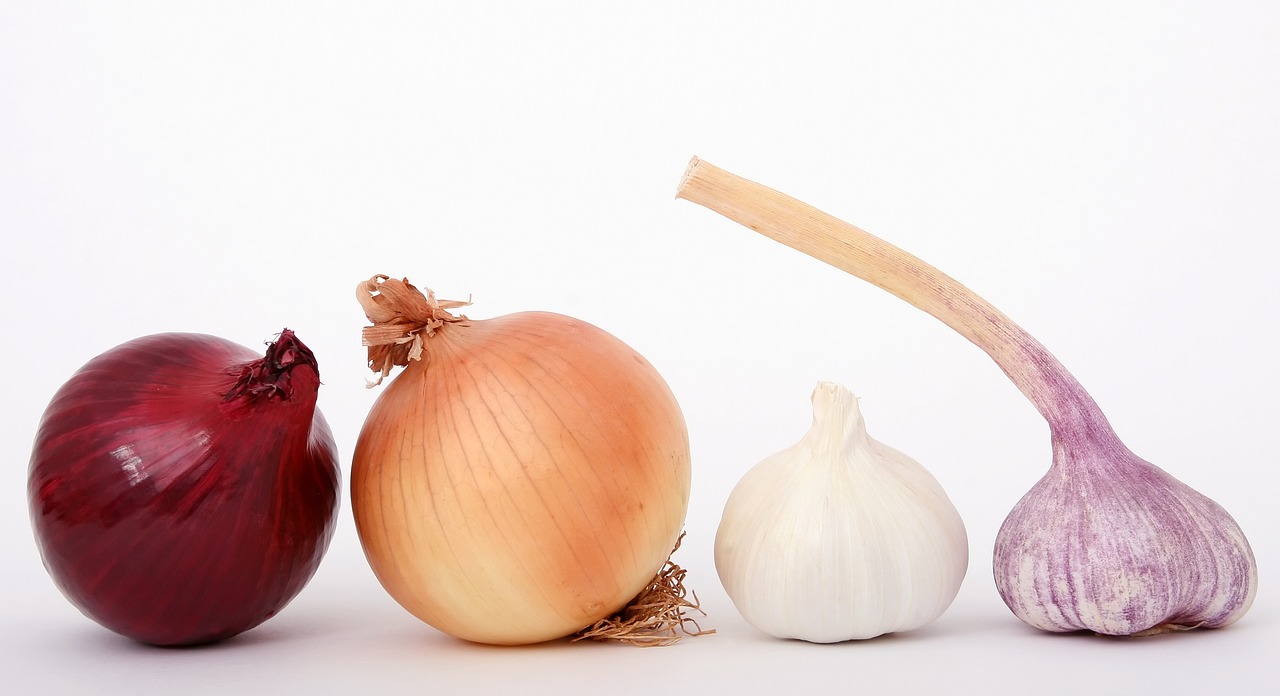
Practical Considerations
Transitioning your beloved pet to a raw food diet can be a thrilling journey, but it’s crucial to approach it with a thoughtful mindset. Just like embarking on a new fitness regimen for yourself, you wouldn’t dive in without some planning, right? Similarly, pets require a balanced diet to thrive, and not all raw food options provide the same nutritional benefits. It’s essential to ensure that your pet's new diet includes a variety of proteins, vegetables, and supplements to meet their specific needs.
One of the first steps in this transition is to consult with a veterinarian or a pet nutritionist. They can help you create a tailored meal plan that considers your pet's age, weight, activity level, and any pre-existing health conditions. This is particularly important because a raw food diet might not be suitable for all pets. For instance, puppies, pregnant or nursing dogs, and pets with certain health issues may require more specialized nutritional support.
Moreover, when you begin this transition, it’s advisable to do it gradually. Start by mixing a small amount of raw food with your pet's current diet, slowly increasing the raw portion over a week or two. This gradual change helps your pet's digestive system adjust without causing any gastrointestinal upset. Keep an eye on their reactions; if you notice any adverse effects, it might be worth reconsidering the ingredients you're using.
Another practical consideration is food safety. Raw food can carry bacteria like Salmonella or E. coli, which can be harmful not only to pets but also to humans handling the food. Always practice good hygiene by washing your hands and sanitizing surfaces after preparing your pet's meals. Additionally, store raw food in the freezer until you're ready to use it, and never leave it out at room temperature for extended periods.
Lastly, consider the cost and availability of raw ingredients. While some pet owners find that making their pet's meals from scratch is rewarding, it can also be time-consuming and expensive. It might be beneficial to explore pre-packaged raw food options that are commercially available. These products often come with a balanced nutritional profile and can save you time in meal preparation.
In summary, while a raw food diet can bring a plethora of benefits to your pet's health and vitality, it’s important to approach the transition with care and consideration. By planning thoughtfully and consulting with professionals, you can ensure that your furry friend enjoys a nutritious and delicious diet that supports their overall well-being.
- Is a raw food diet safe for all pets? - Not all pets are suited for a raw food diet. Consult your veterinarian to determine if it’s appropriate for your pet.
- How do I transition my pet to a raw food diet? - Gradually introduce raw food by mixing it with their current diet over a week or two.
- What are the risks associated with feeding pets raw food? - Risks include potential bacterial contamination and nutritional imbalances if not properly planned.
- Can I prepare raw food at home? - Yes, but ensure you follow a balanced recipe that meets your pet's nutritional needs.
- Are there commercial raw food options available? - Yes, many brands offer balanced raw food diets specifically formulated for pets.
Frequently Asked Questions
- What is a raw food diet for pets?
A raw food diet for pets consists of uncooked meat, bones, fruits, and vegetables. It aims to mimic the natural diet of animals in the wild, providing them with essential nutrients without the additives and fillers found in processed foods.
- What are the benefits of feeding my pet a raw food diet?
Feeding your pet a raw food diet can lead to improved nutritional value, better digestion, increased energy levels, and enhanced coat condition. Pets often experience fewer allergies and healthier weight management, contributing to their overall well-being and vitality.
- Will my pet adapt easily to a raw food diet?
Many pets adapt well to a raw food diet, but some may require a gradual transition. Start by mixing a small amount of raw food with their current diet and slowly increase the raw portion over time. This helps their digestive system adjust without causing gastrointestinal upset.
- Are there any risks associated with a raw food diet?
While there are benefits, there are also risks. Raw diets can potentially expose pets to harmful bacteria if not handled properly. It's crucial to maintain hygiene and consult with a veterinarian to ensure a balanced diet that meets all nutritional needs.
- How do I ensure my pet gets all necessary nutrients on a raw food diet?
To ensure your pet receives all the necessary nutrients, it's essential to plan the diet carefully. Incorporate a variety of protein sources, fruits, and vegetables, and consider supplements if needed. Consulting a veterinarian or a pet nutritionist can be incredibly helpful in this process.
- Can raw food diets help with my pet's allergies?
Yes, switching to a raw food diet may help alleviate food allergies in pets. By eliminating common allergens found in processed foods, many pet owners have reported improvements in their pets' skin conditions and overall health.
- What should I consider before switching to a raw food diet?
Before making the switch, consider your pet's specific health needs, any existing medical conditions, and the time required for meal preparation. It's also important to research and understand the nutritional balance required for your pet's age, size, and activity level.






